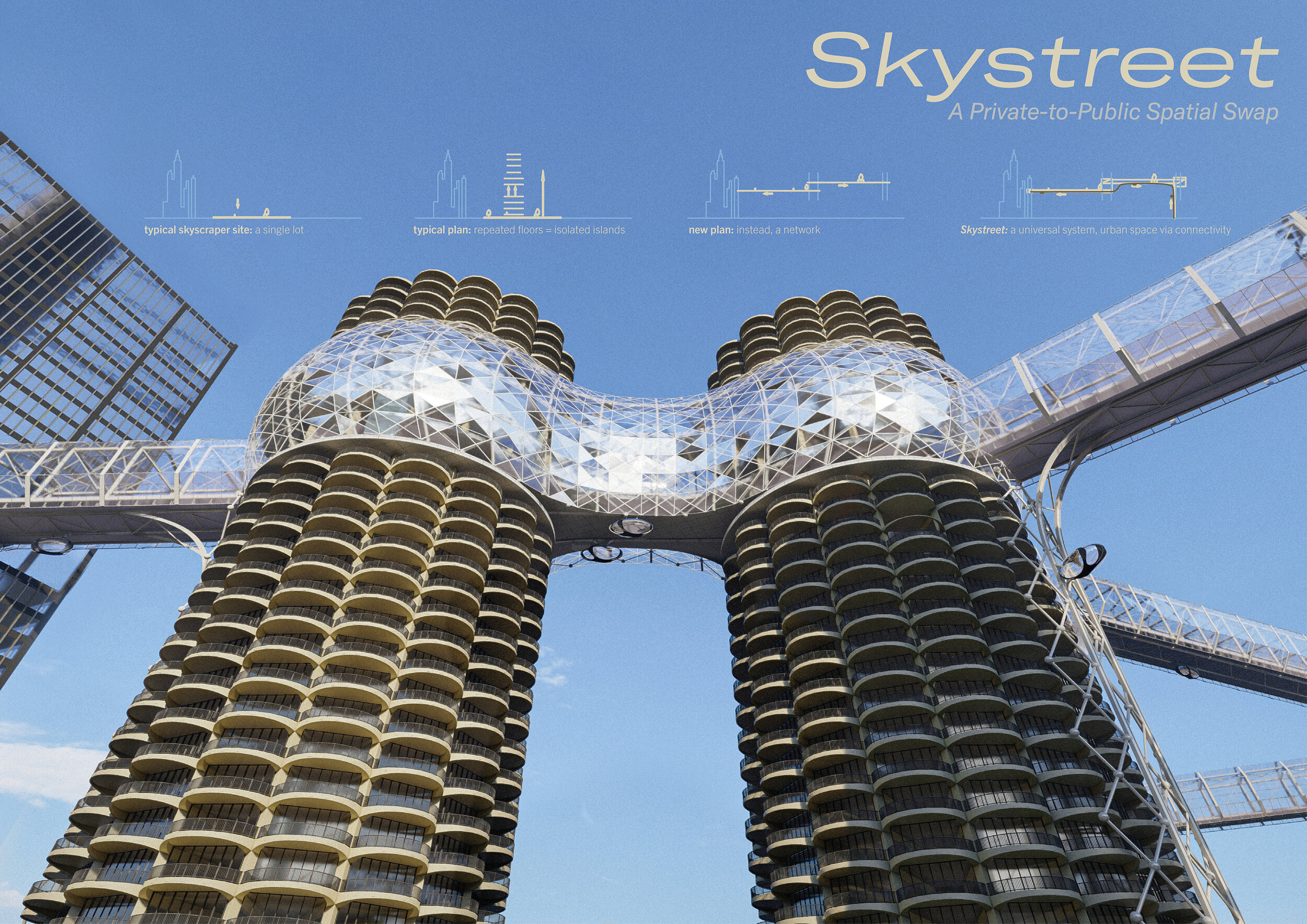Skystreet
In the early 1960s, Bertrand Golberg’s concept for Chicago’s Marina City was unveiled as an innovation in contemporary urban space. Promoted as a “City Within a City,” Goldberg’s vision reclaimed ground adjacent to the Chicago River, breaking numerous skyscraper height records and constructing its own context as an interconnected mixed-use complex contained within one city block. Marina City’s innovation in urban spatial organization has since become commonplace; mixed-use city blocks abound worldwide.
Since the birth of that project, skyscraper innovations occur via new technologies in engineering, sustainability, and design, reaching ever higher and stretching the limits of modern technology. But the current contemporary skyscraper abides by the rules set up for a type that was invented near the turn of the 20th century, an optimization of performance, construction, and efficiency. At a time when each next skyscraper is a more optimized version of its predecessor, Skystreet instead innovates on the typology itself.
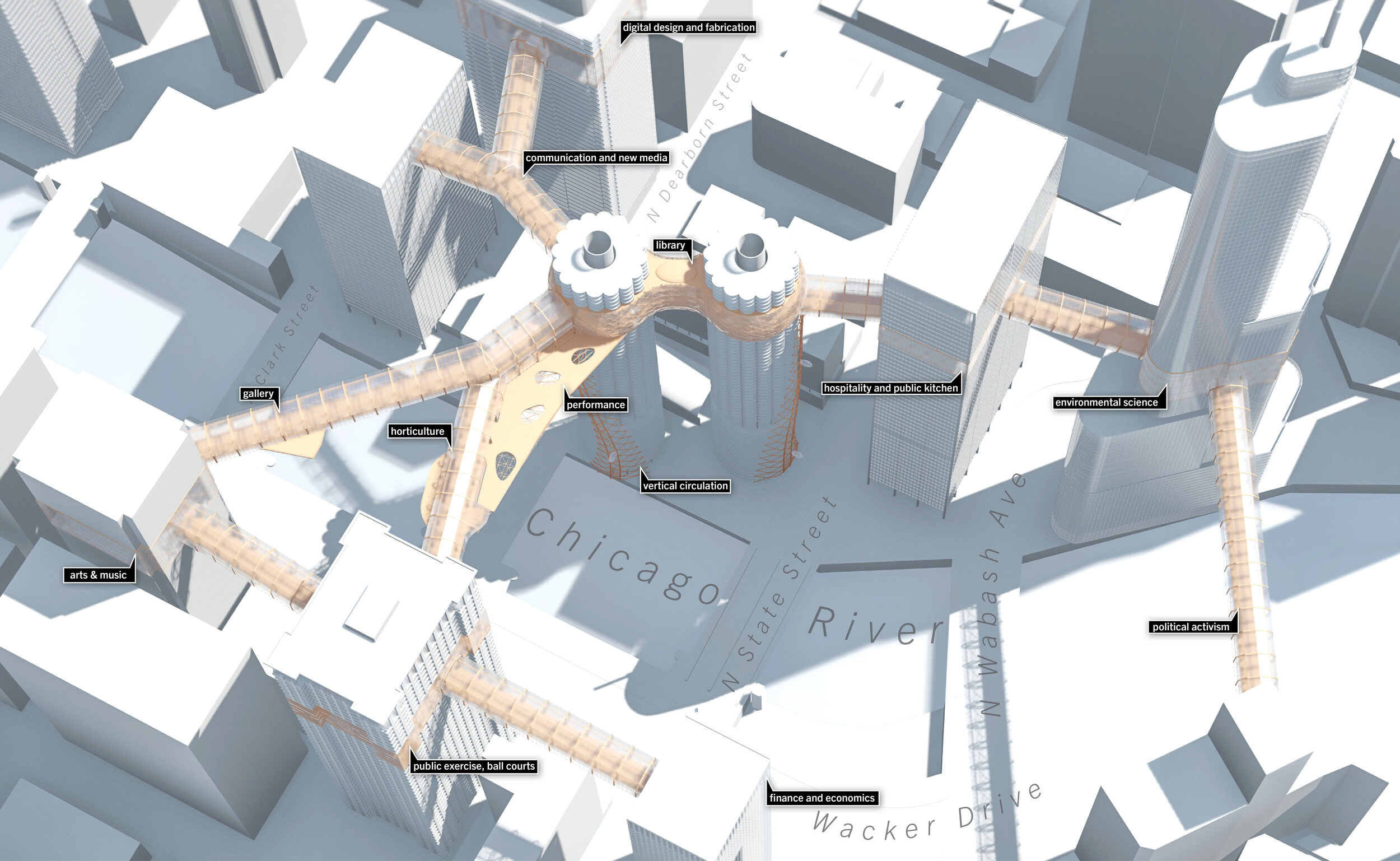
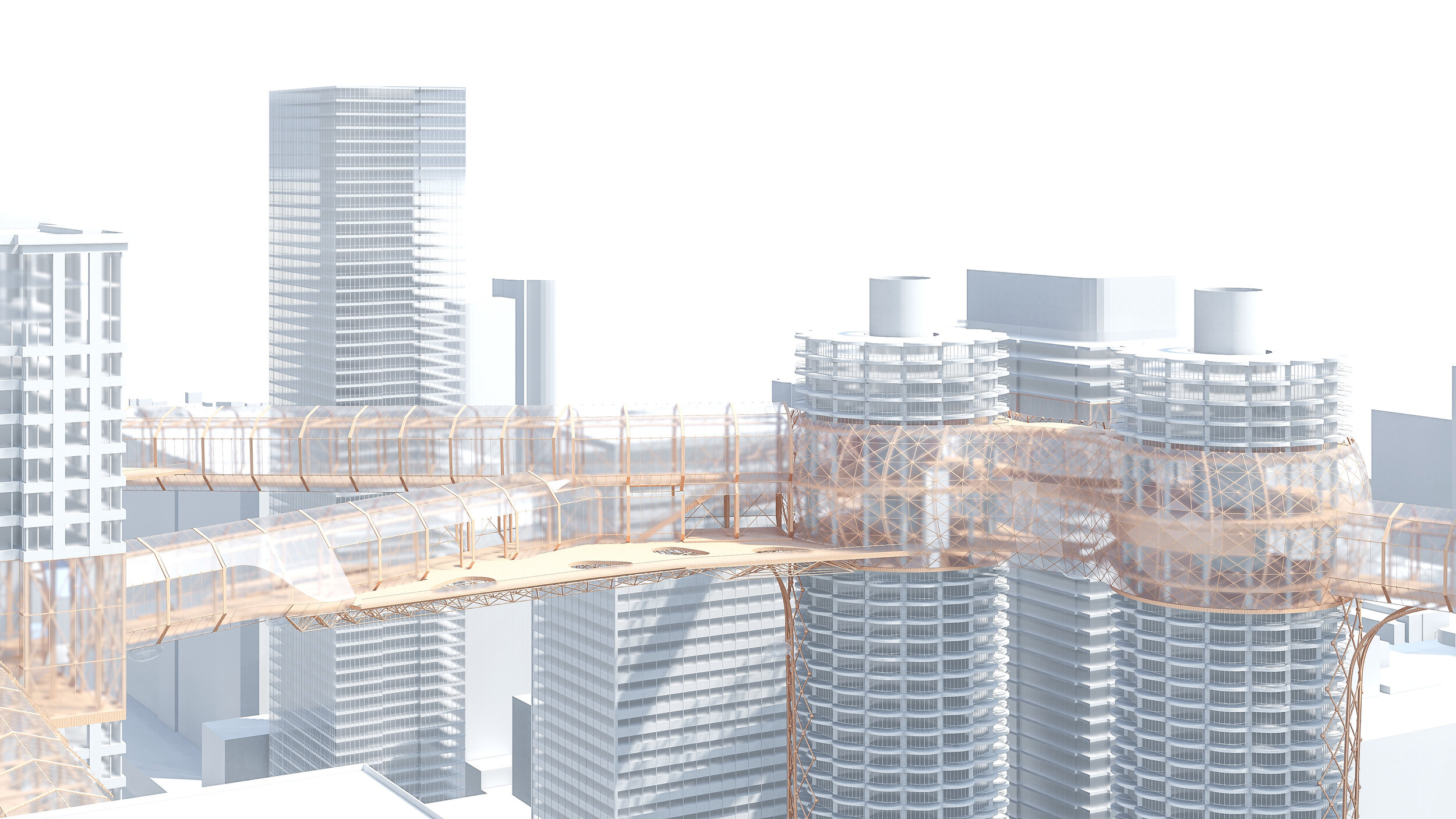
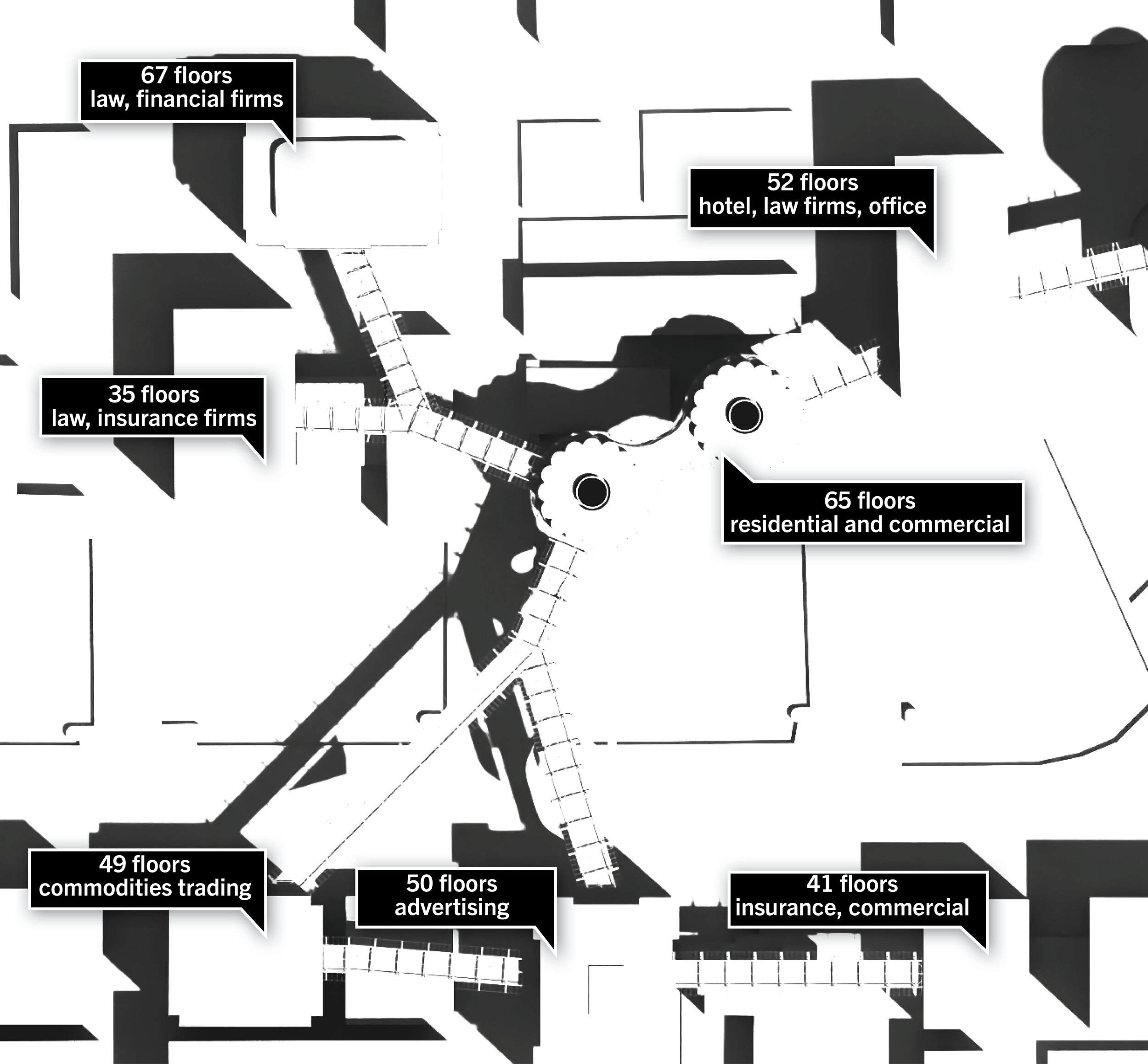
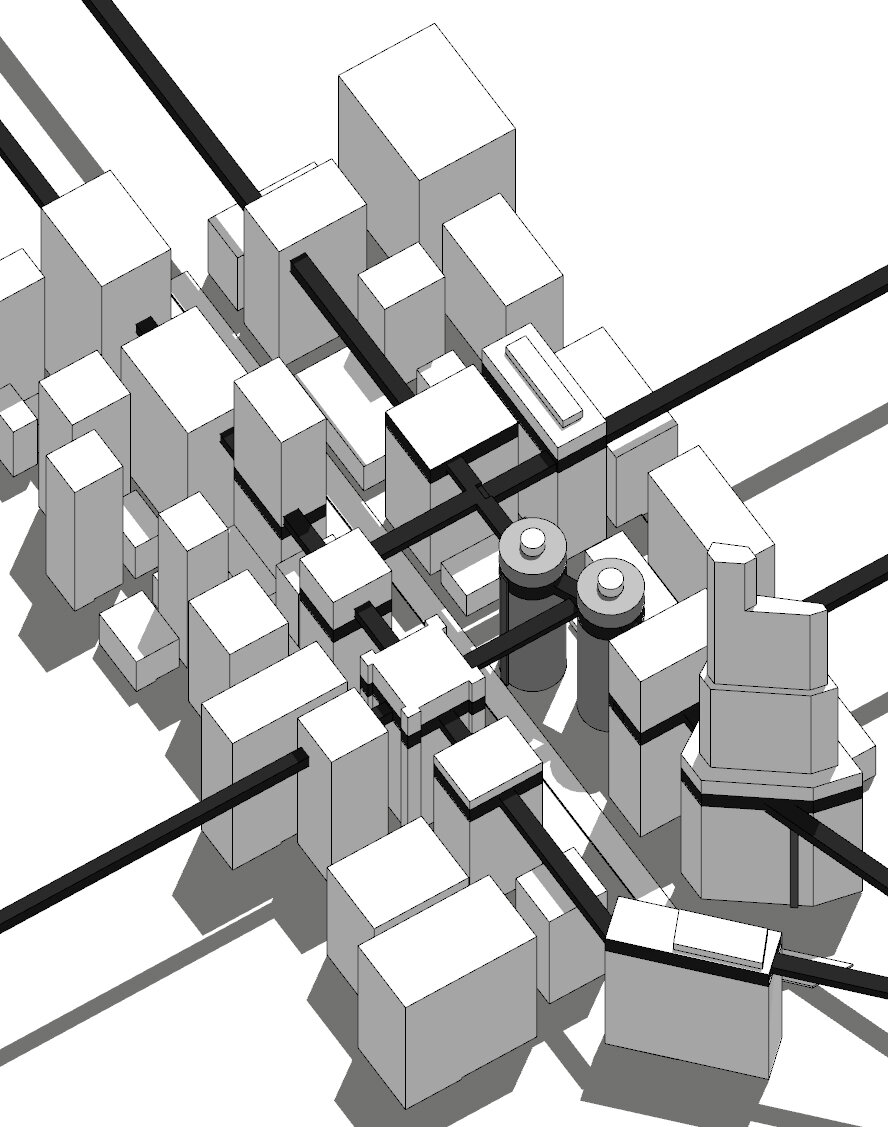
A skystreet is a network; an active form that calls into question the ownership of urban space that dominates the interiors of every skyline across the world. The skystreet innovates on the “next big thing in skyscraper design” by asking how architecture can make the most compelling urban spaces in the world accessible to all, challenging capital questions of real estate pro formas and instead offering a vision for true shared public space in the sky. Charged by Marina City’s quest for a “City Within a City,” skystreets worldwide will reclaim private real estate for public use, strategically splicing skyscrapers into a network of public space and activity.
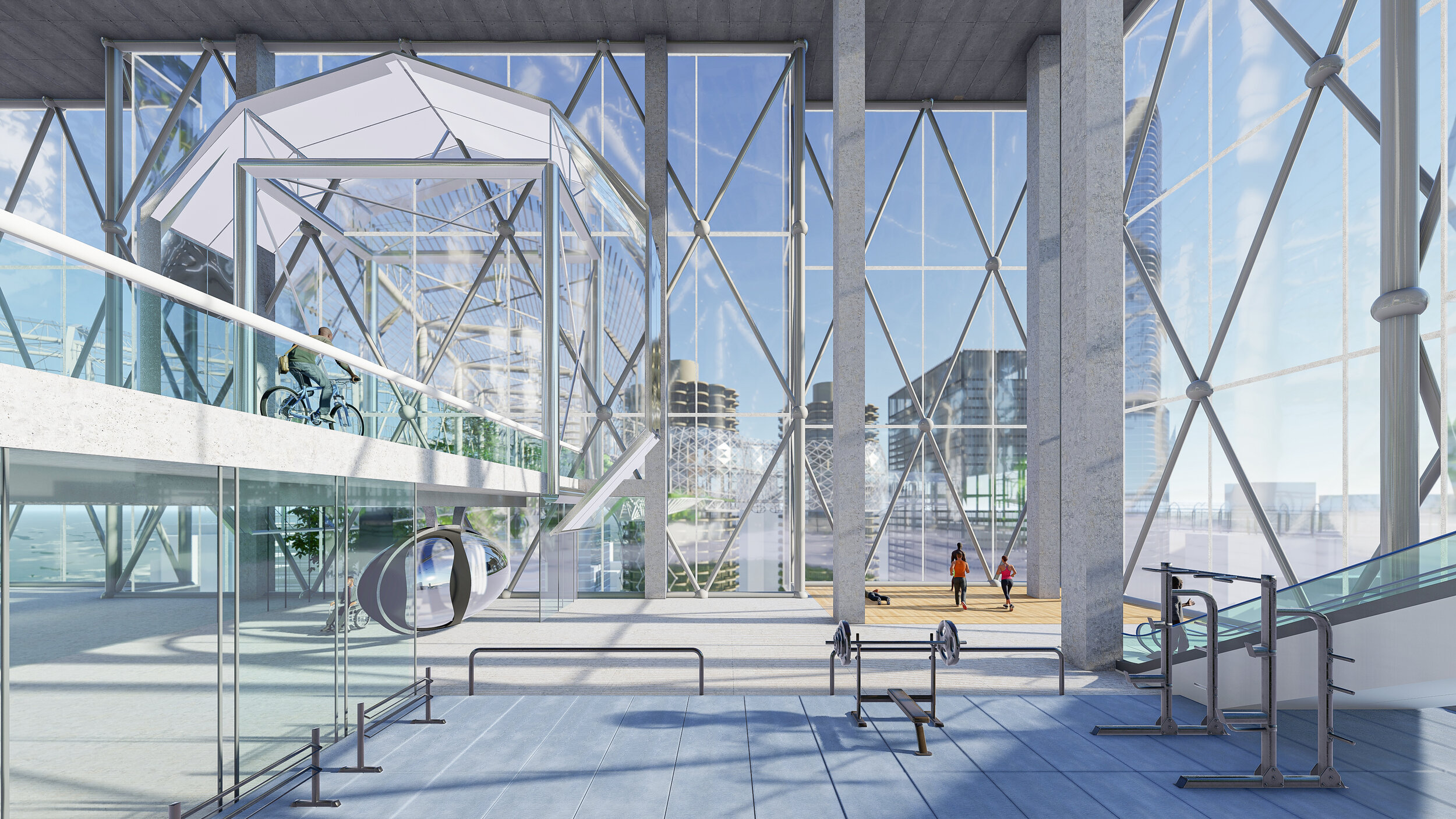
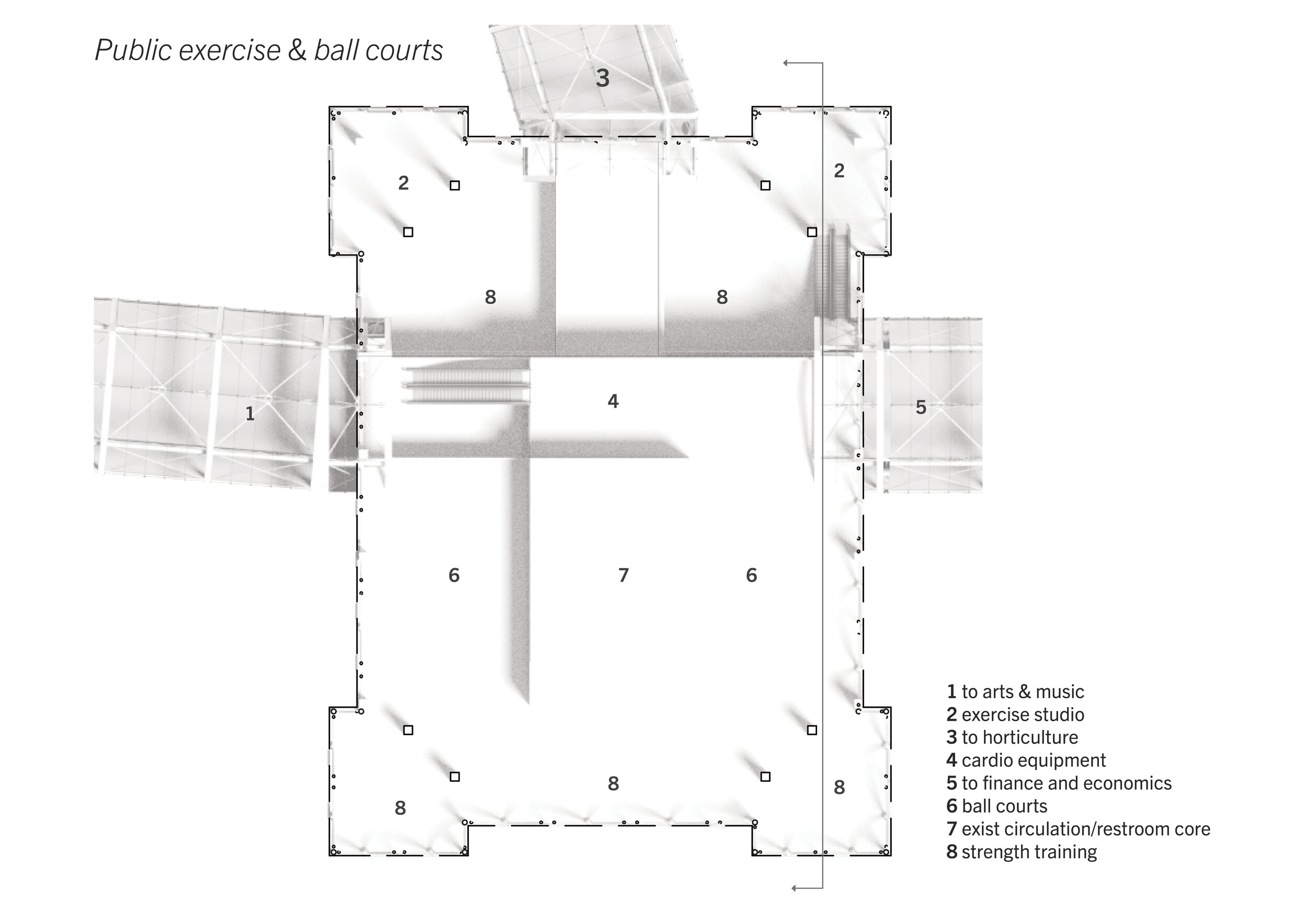
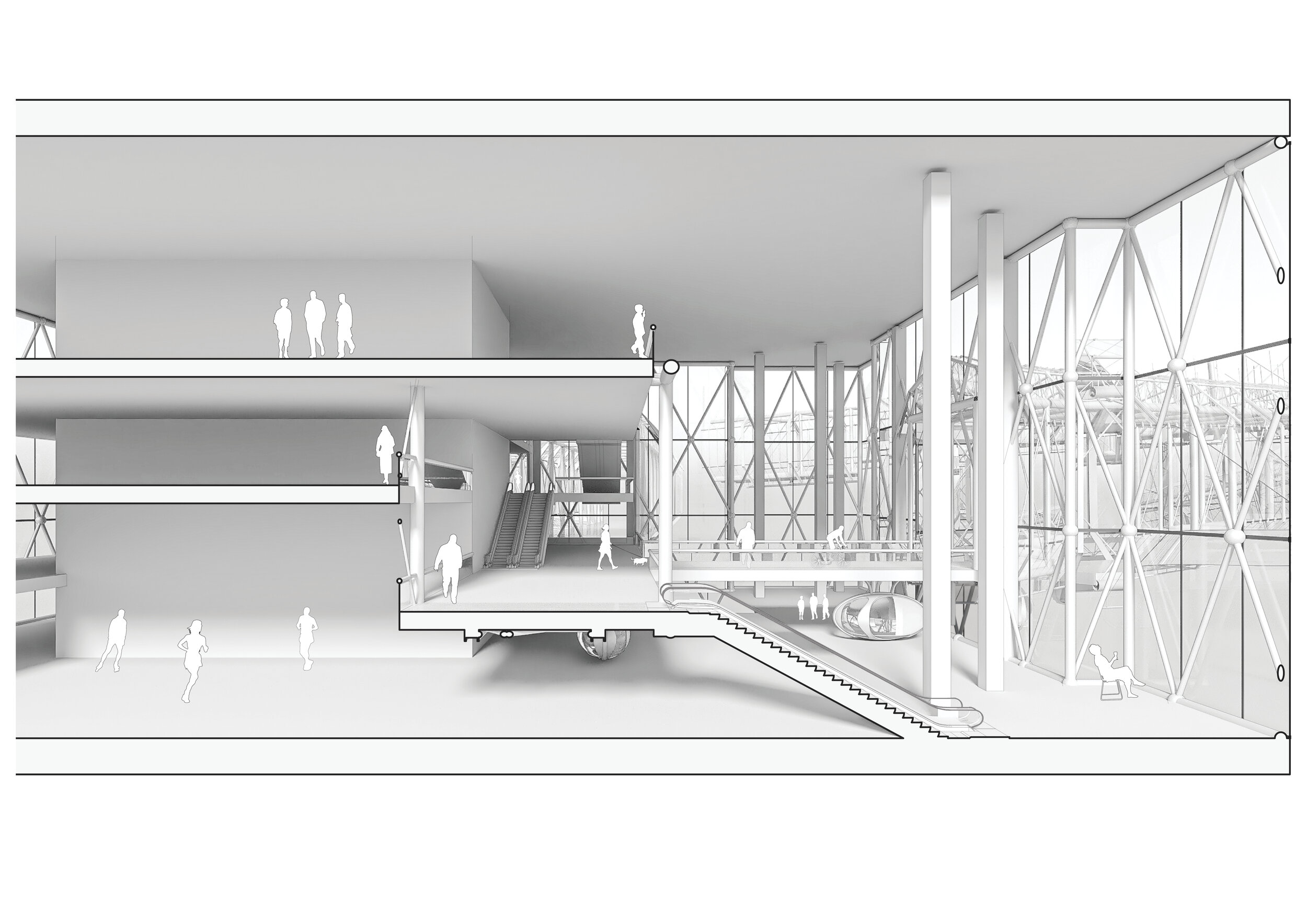
The network is comprised of nodes, webs, and flanges that stitch together a connective tissue from existing real estate, sidestepping the environmental destruction that is coupled with greenfield ground-up construction. Nodes are multi-floor spaces tactically revised inside city towers that host transportation network interchanges and new public programs for the city. Webs connect these nodes via bridge-like spaces that offer both a new way to move in the city and new urban space, elevated high above the traditional street grid to offer a new perspective on public urban life. Flanges are outdoor skyparks, threaded between nodes and webs and offering the city a new spatial type fit for the complexity and audacity of the skystreet network.
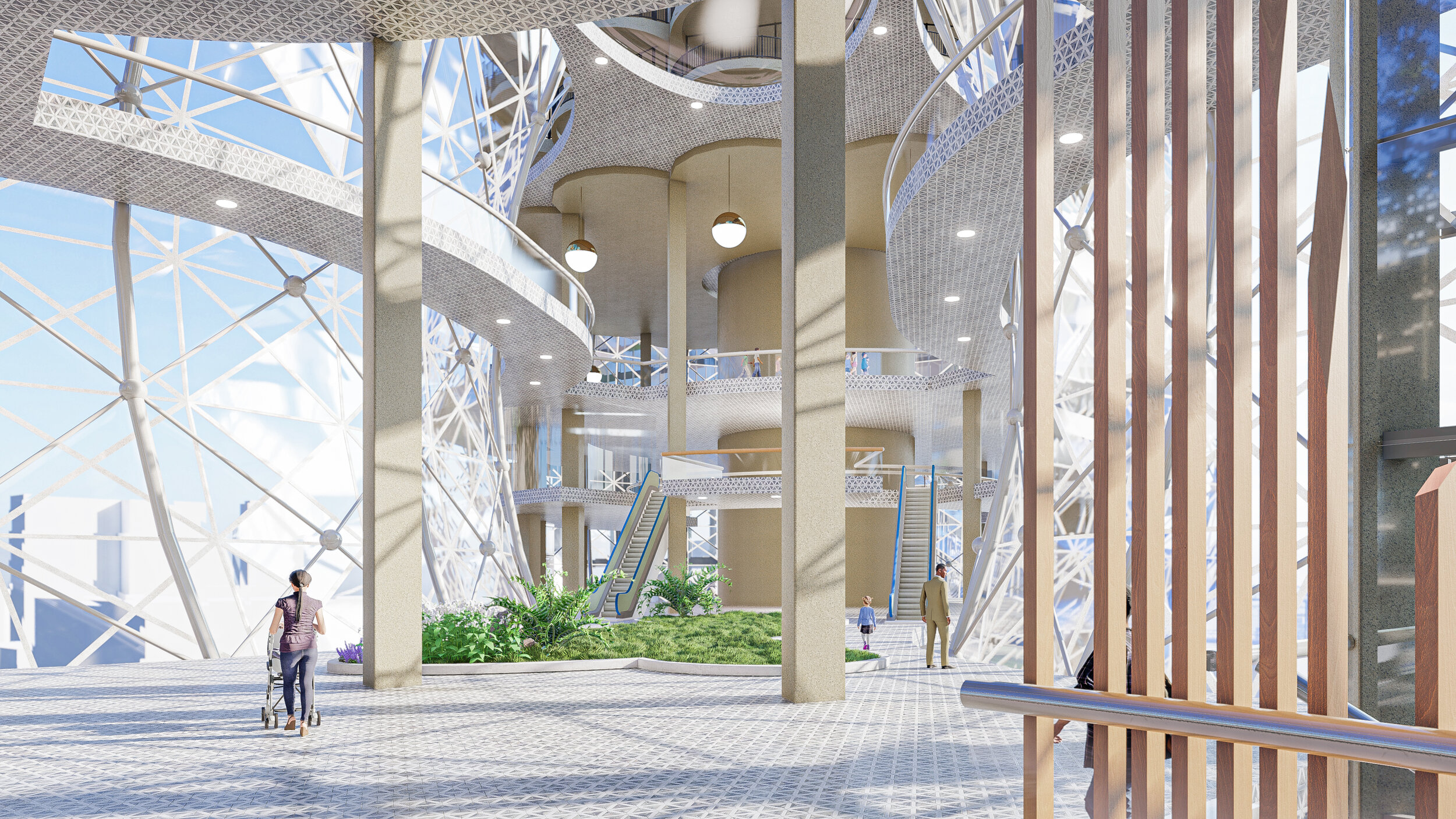
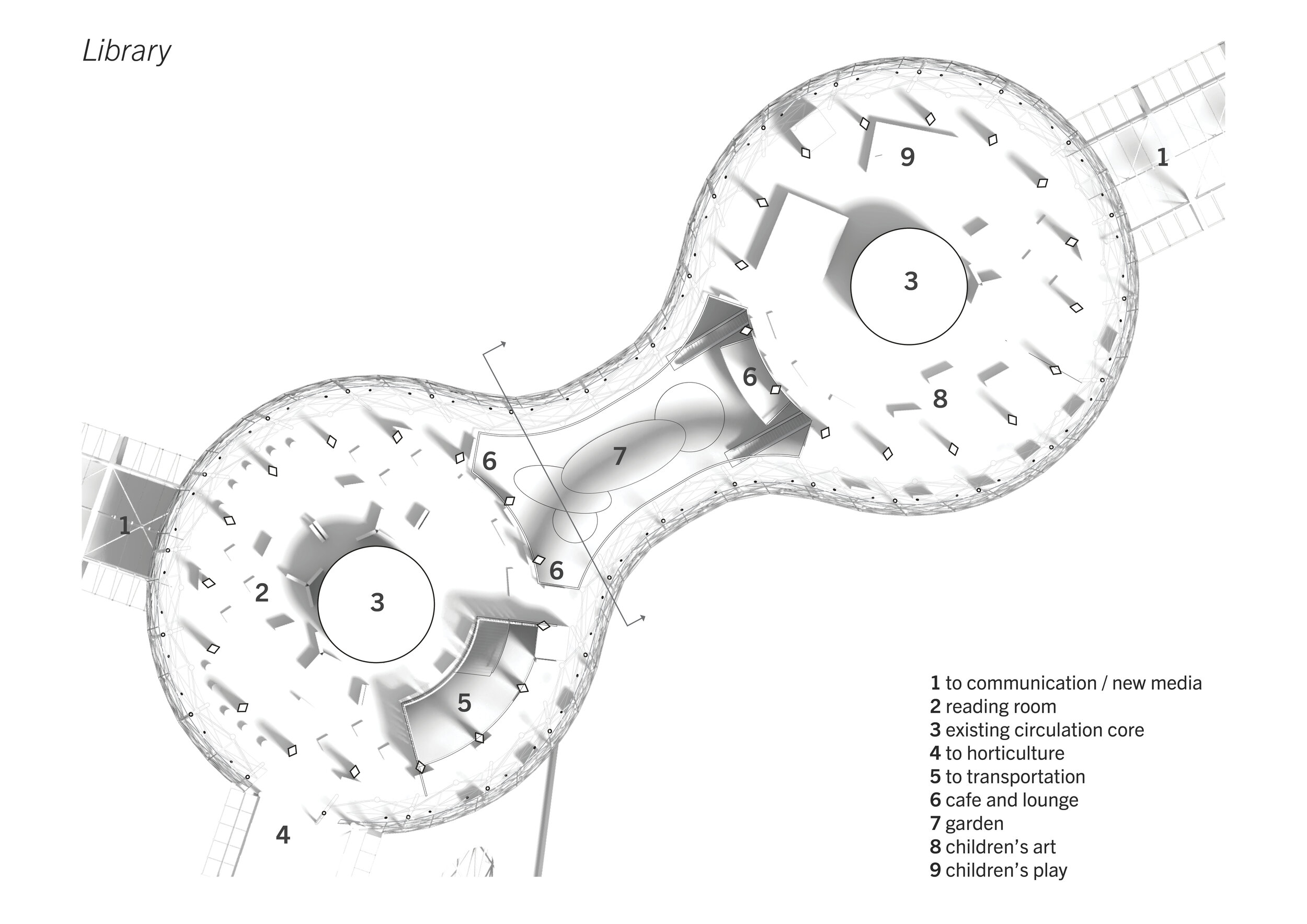

Nodes inside formerly private towers serve as guides to passersby on streets below, identifying towers as participants in the skystreet network and registering new space supported by economic innovation and cooperation among city governments and private developers. Skystreet nodes offer a new possibility for commercial real estate as work-from-home business models evacuate demand for expensive downtown leases. Innovative structural engineering facilitates the scaling-up of stacked slab design to dignified public space, boosting ceiling heights to meet the grandeur of city skylines. Building cores are left intact, stabilizing structures and facilitating the coupling of private and public space throughout the remaining spaces in each tower.
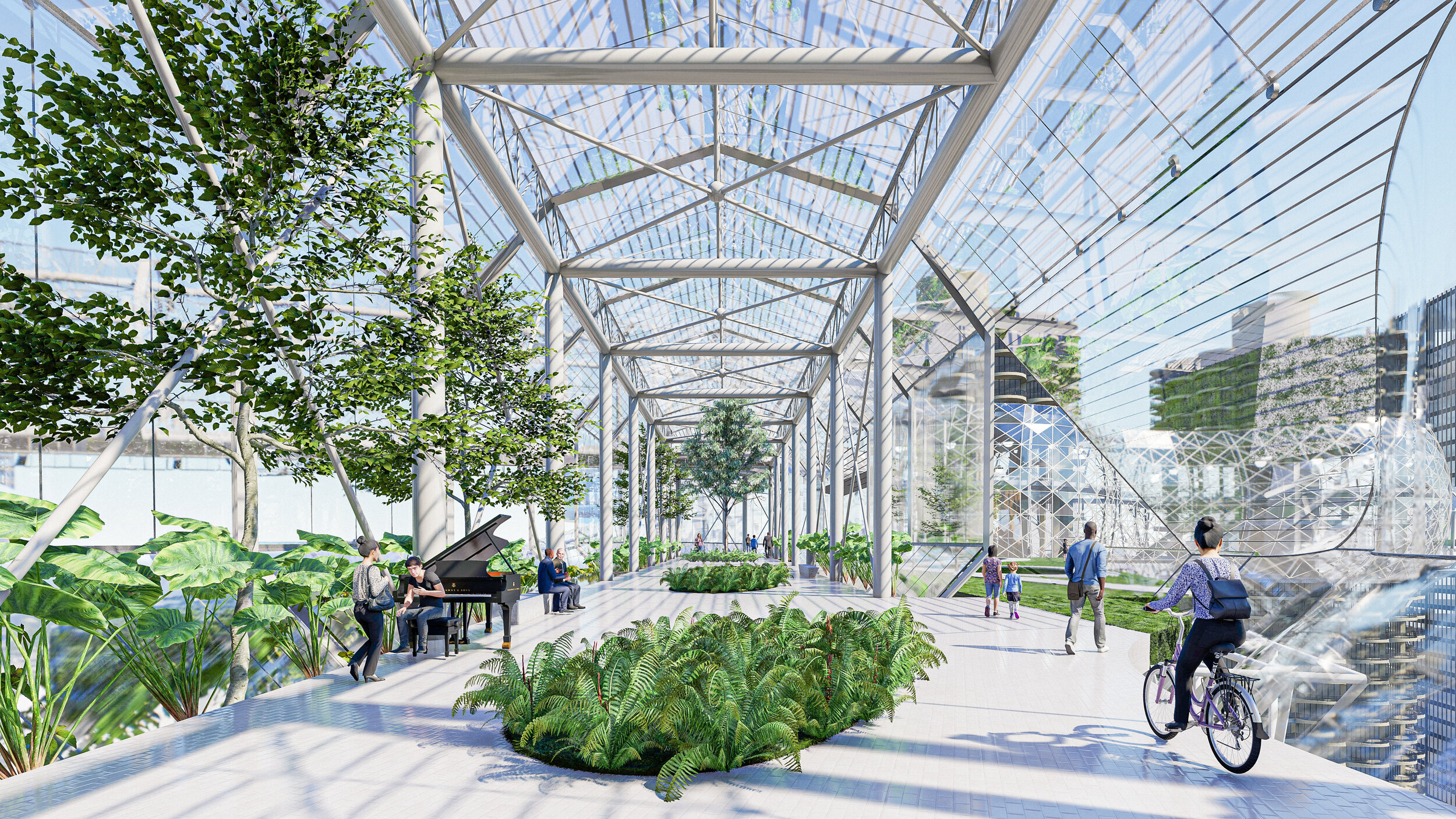
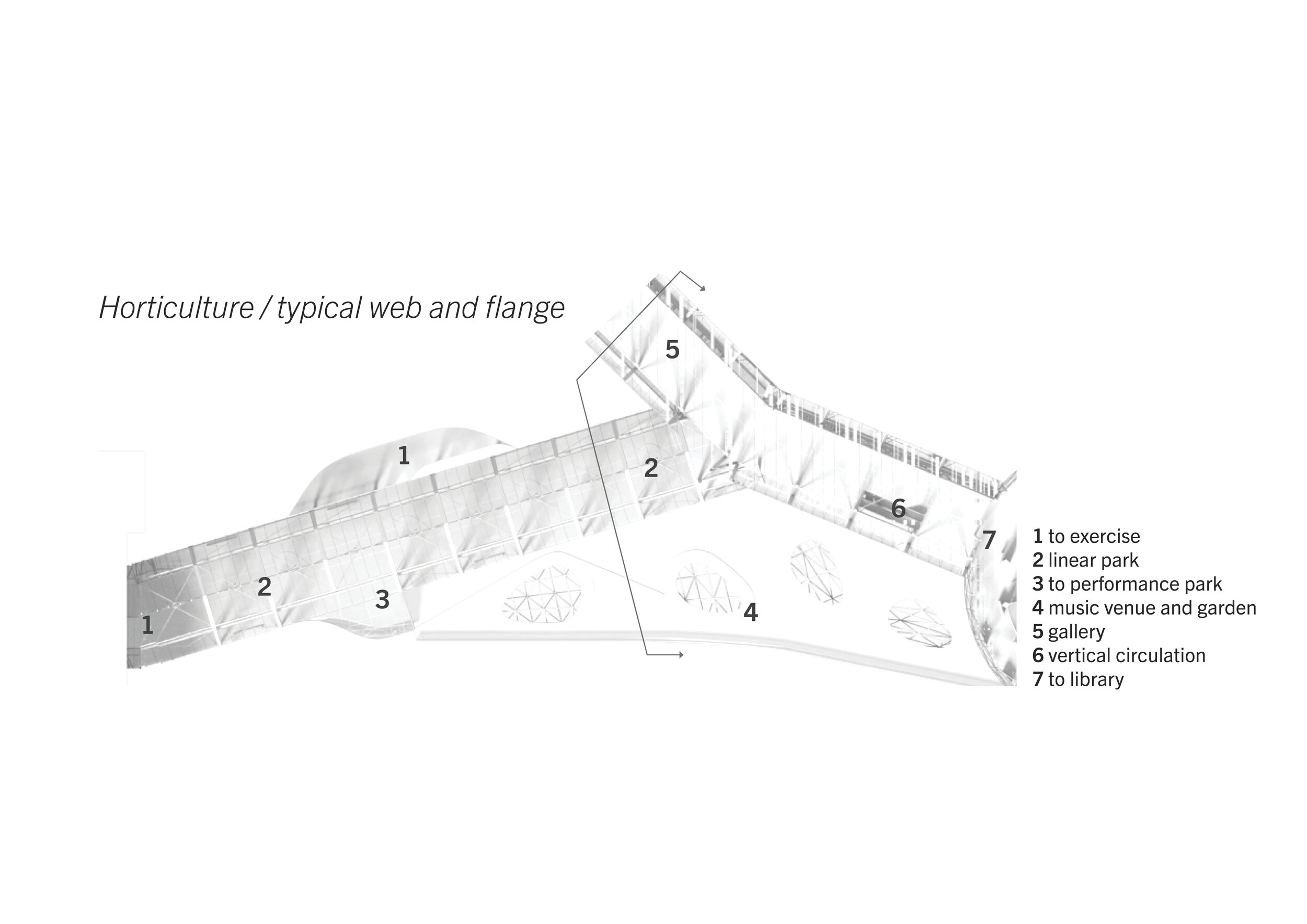
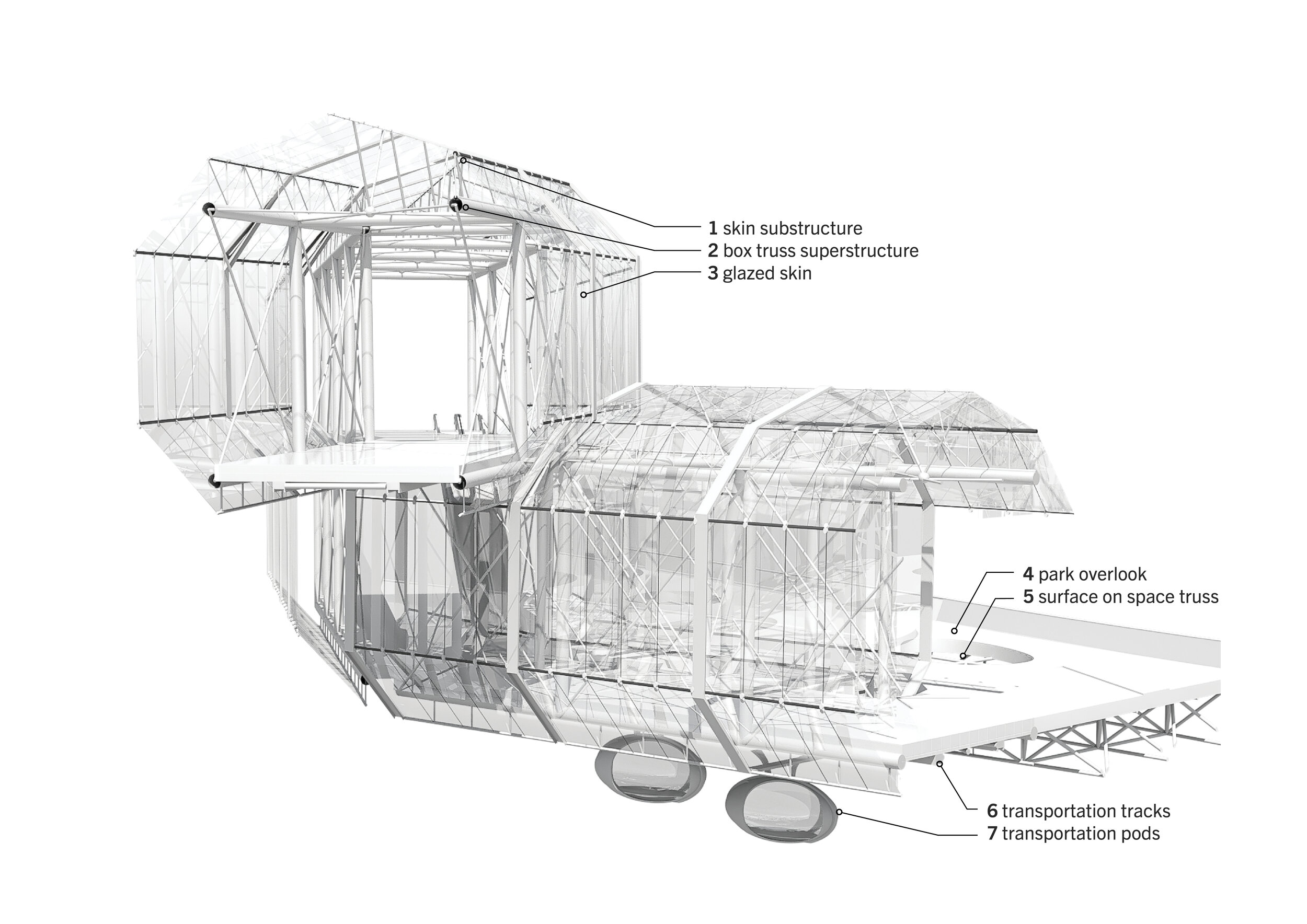
Webs and flanges host energy-neutral pedestrian and automated transportation, bike lanes, and running paths. Pedestrians spend time in skystreets, and the new transportation network offers accessibility to all users in a bold and daring way. These spaces continue Chicago’s lineage as a leader in architectural innovation, with a spatially innovative precept.

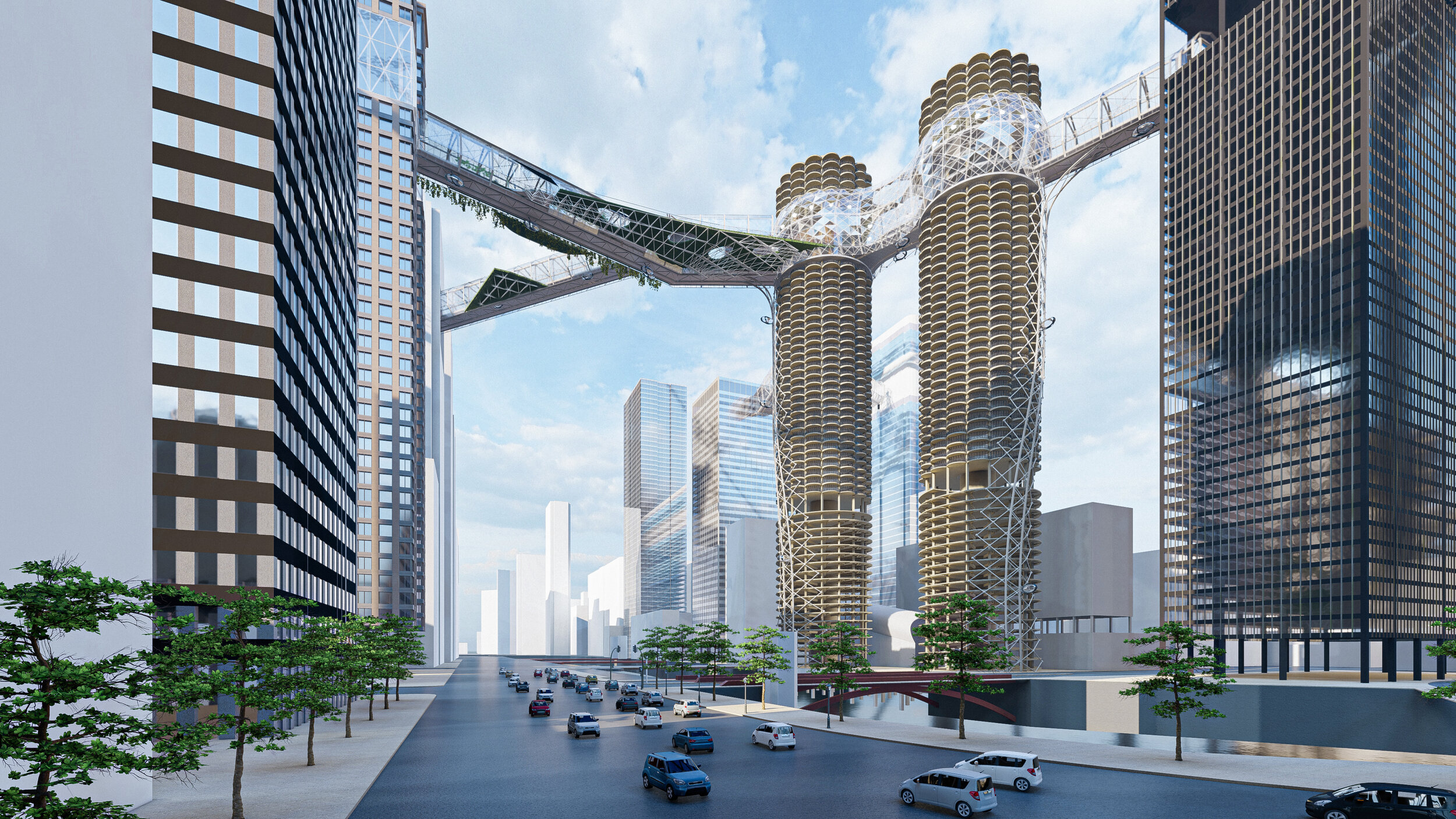
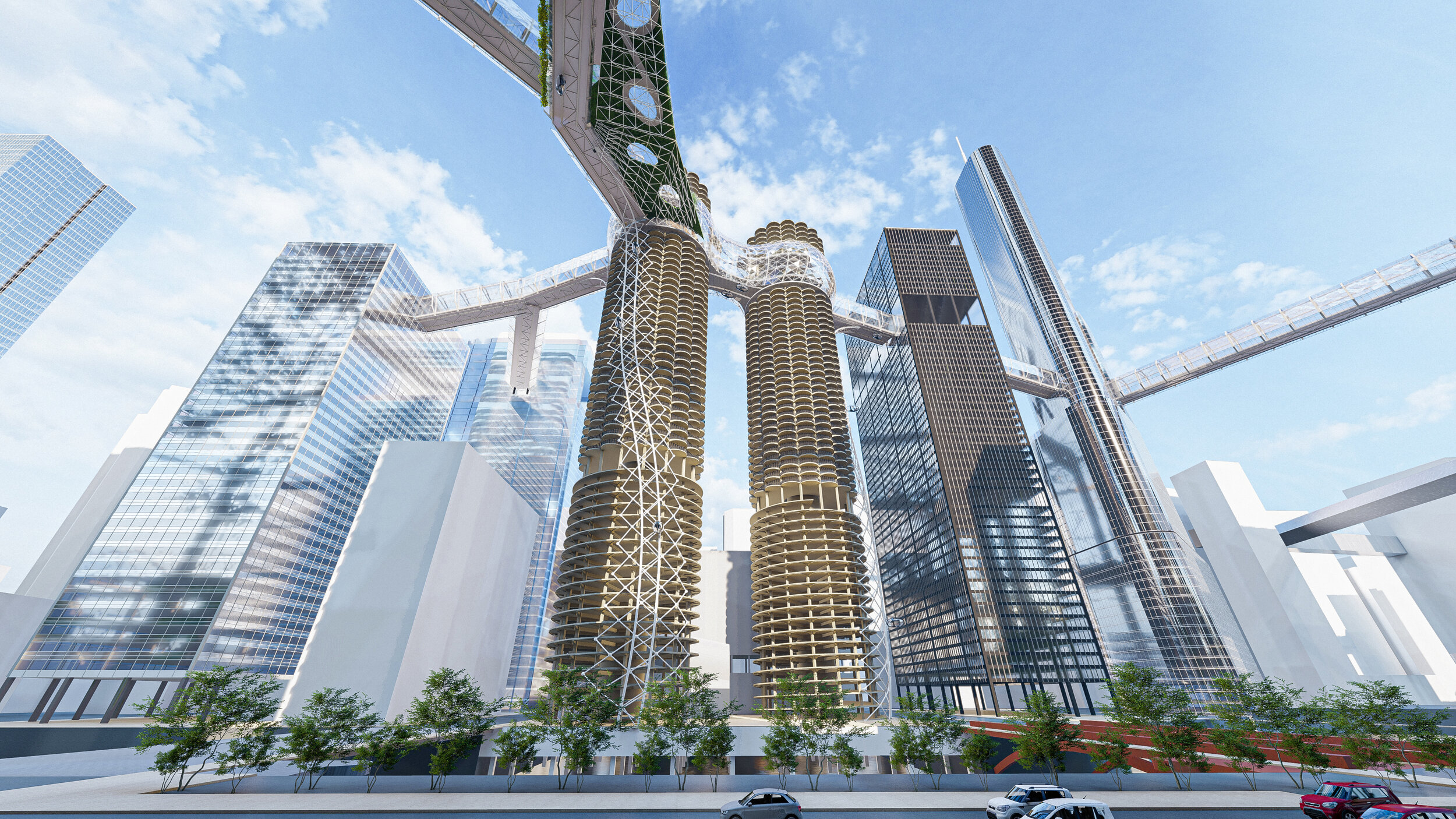
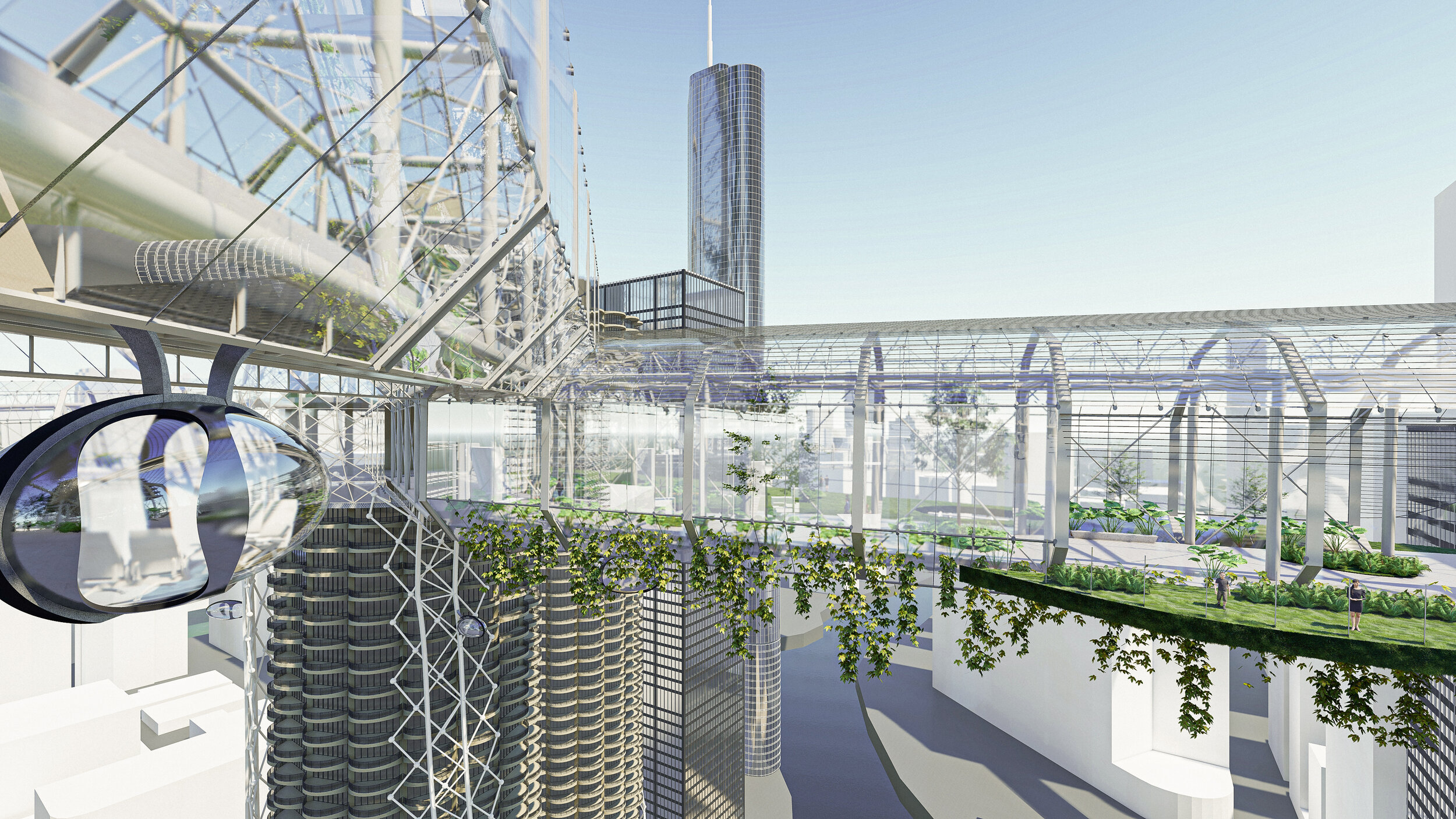
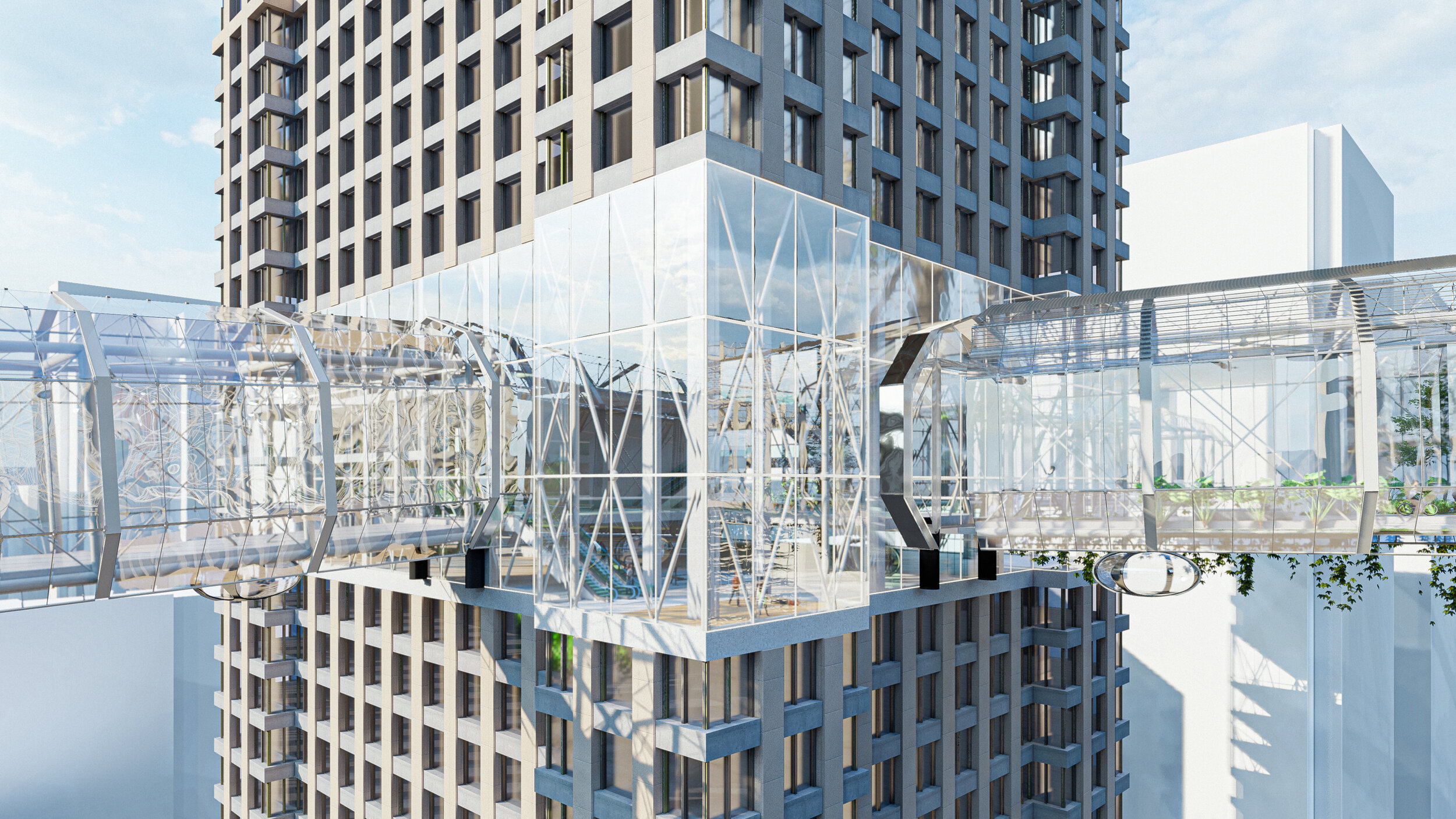
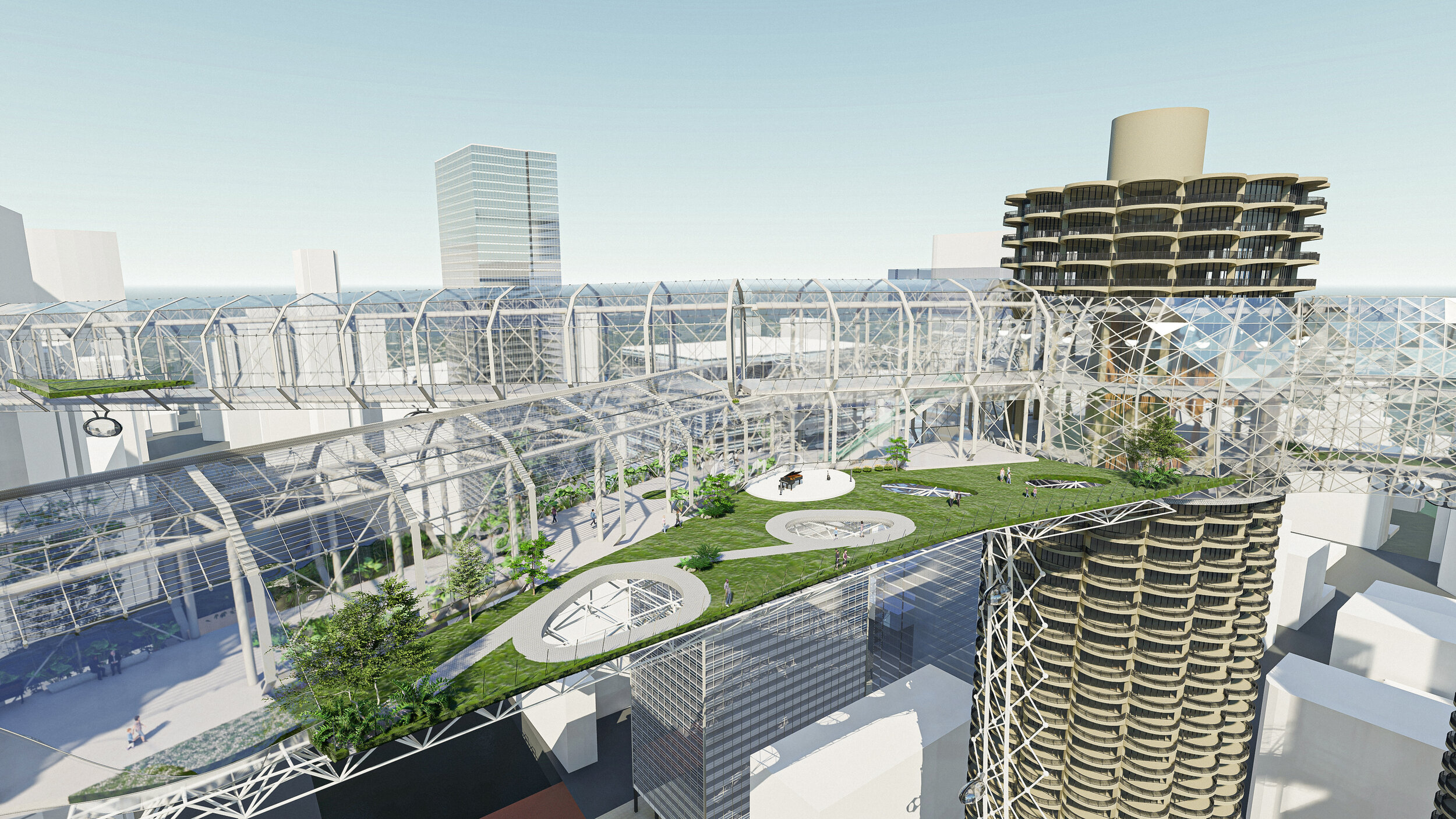
For the construction of the Chicago skystreet and others worldwide, innovations in structural engineering are supplanted by innovations in planning, economics, and zoning. Air rights are sold or donated, while zoning texts are deconstructed, optimized, and rebuilt to maximize highest and best use for public good. The same type of financial and planning innovations that facilitated some of the most dignified public urban spaces in cities are reexamined for the 21st century, giving monuments to 20th century capitalism a chance to offer parts of themselves as generators for a new democratic spatial system. Skystreet posits this new urban fabric by grafting a system of connective tissue onto the iconic Marina City and planting the seed for its outward growth throughout Chicago as a model for future urban space.
The next new skyscraper innovation is not a skyscraper at all. It is a system, a network, a connective tissue that latches onto the armature of the great race to the sky that typified the end of the 20th century and launched us into the new millennium. It steps over the technological questions of “can we build higher?” and exchanges them for the social “can we build over?”
STATUS: Competition entry, completed with Elnatan Belay and the support of Abstract Group
DATE: Summer 2020
SITE: Chicago, Illinois
